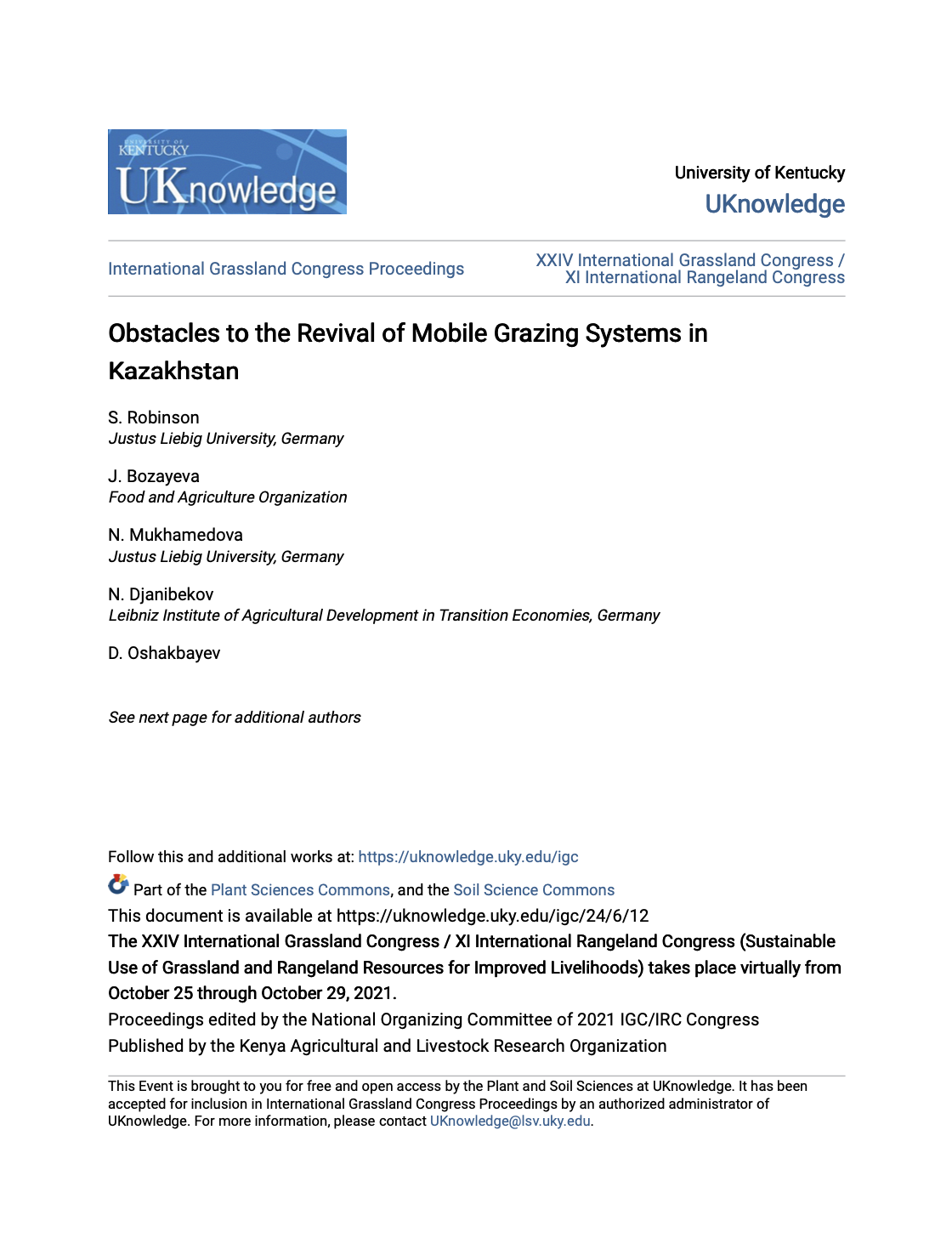Resource information
This document is available at https://uknowledge.uky.edu/igc/24/6/12
The XXIV International Grassland Congress / XI International Rangeland Congress (Sustainable Use of Grassland and Rangeland Resources for Improved Livelihoods) takes place virtually from October 25 through October 29, 2021.
Proceedings edited by the National Organizing Committee of 2021 IGC/IRC Congress
Published by the Kenya Agricultural and Livestock Research Organization
Livestock mobility was an essential characteristic of Kazakh livestock production systems, allowing animals to take advantage of spatial and temporal variability in climate and vegetation, optimising forage intake over the year. These systems broke down following the end of the Soviet Union. In this paper we examine the extent and determinants of the recovery of mobile livestock husbandry in south-eastern Kazakhstan, using surveys and semi-structured interviews with livestock farmers and rural households (holding livestock but not registered as farms). We find positive relationships between livestock holding size and probability of mobility. Winter pastures are particularly important for large farms, with households and smaller farms more dependent on supplementary fodder. The major formal property right over pasture is the long-term leasehold, allocated by auction and associated with significant transaction costs. Leasehold markets function poorly, so farms use a combination of leasing, subleasing and short-term contracts with local authorities to assemble the pastoral resources they need. Few farmers conduct more than a simplified summer-winter migration, whilst around 30% of farms and 70% of households (which own the bulk of livestock) are entirely sedentary, staying on over-used village pastures all year round. Many of these producers express a desire for improved pasture access. The 2017 Law on Pastures introduced district-level pasture use planning, with promotion of mobility and allocation of remote pastures to those with poor access. But the Law does not include new land tenure mechanisms appropriate for small producers (owning few livestock and without leaseholds) which can be employed to realise this goal. Moreover, most pastures are already leased. We discuss options for grazing system management which may simultaneously increase the economic contribution of pastures, improve their condition and reduce rural inequalities created by disparities in access to resources.

